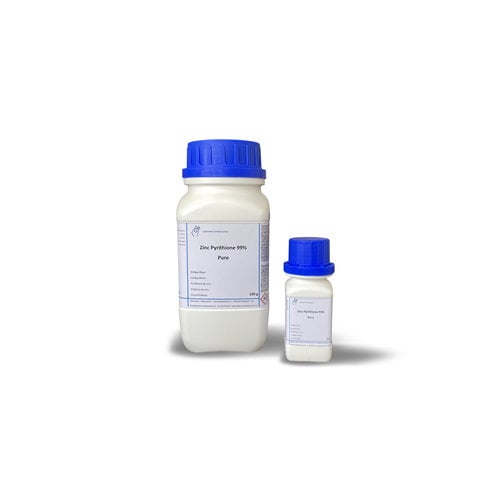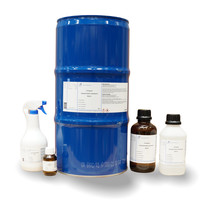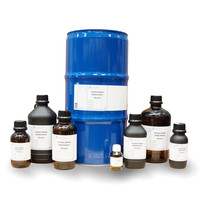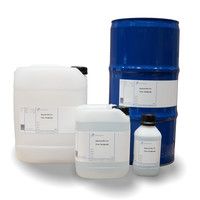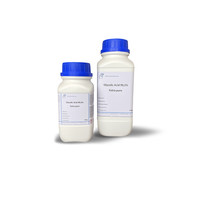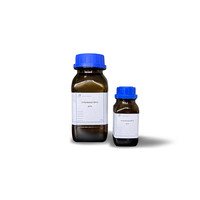You have no items in your shopping cart
Zinc pyrithione 99+% extra pure
- Buy 2 and save 5%
- Buy 6 and save 10%
Zinc pyrithione (INN) is the zinc salt of pyrithione (pyridine-2-thiol-1-oxide). It is a colorless solid with anti-fungal and antibacterial properties. Known by various chemical and trade names, it was first described in the 1930s and is widely used, mainly in industry and cosmetics.
Zinc pyrithione is chemically incompatible with paints that rely on metal carboxylate for curing. When used in water-based acrylic paint, a binder for the iron ions is required if there is a high iron content in the water. Zinc pyrithione is broken down only slowly by ultraviolet radiation, so it can withstand direct sunlight for years. These and the heretofore only partially understood biological effects, which extend to the genetics and metabolism of many plant and animal cell types, represent a desired effect or an undesired side effect, depending on the situation.
Applications
-Medicine
Zinc pyrithione is best known for its use against excessive dander and fungal attacks. Medical diagnoses include seborrheic and other eczema, psoriasis, athlete's foot, and other forms of tinea.
-Biocide
Zinc pyrithione has a biocidal effect:
Due to its low solubility in water (8 ppm at neutral pH), zinc pyrithione is suitable for use in exterior paints and other products that protect against fungus. The anti-fungal effect appears to stem from its ability to disrupt the transport of substances across the cell membrane by blocking the proton pump that feeds the transport mechanism. Fungi can inactivate pyrithions in low concentrations. In addition, zinc pyrithione is an effective algaecide.
Zinc pyrithione is also used for the antibacterial treatment of sponges.
Technical properties
Empirical formula C10H8N2O2S2Zn
Molar mass (M) 317.7g / mol
ADR 6.1 II
WGK 2
CAS No. 13463-41-7
UN No. 2811
Downloads
$$$$$
Hazard statement code (H code)
H301 + H331 Toxic if swallowed or if inhaled.
H318 Causes serious eye damage.
H410 Very toxic to aquatic life with long lasting effects.
Preventive code (P code)
P273 Avoid release to the environment.
P280 Wear eye protection / face protection.
P301 + P310 + P330 IF SWALLOWED: Immediately call a POISON CENTER / doctor. Rinse the mouth.
P304 + P340 + P311 IF INHALED: Remove person to fresh air and keep comfortable for breathing. A
Call POISON CENTER / doctor.
P305 + P351 + P338 + P310 IF IN EYES: Rinse cautiously with water for several minutes. remove contact lenses, if possible; keep rinsing. Immediately call a POISON CENTER / doctor.





